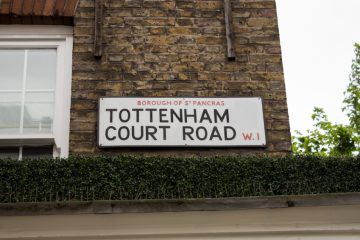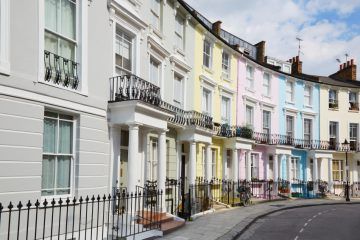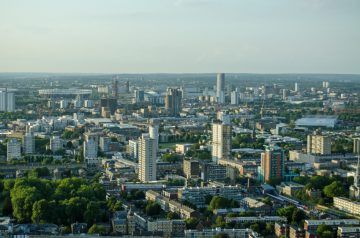Where to Buy Along the Crossrail Route
We’ve all heard of Crossrail and the Elizabeth line, but if you’re searching for your next investment hotspot, where should you buy along the route?
Recent reports from Rightmove claim that asking prices along the Elizabeth line have surged by up to a third in the past 12 months alone, and they’re continuing to rise. Analysts predict that the average house price on the Crossrail route will increase by £133,000 between now and when the line launches in 2018/19.
If you’re looking for a lucrative location to invest in, here are the top spots:
Forest Gate
On the southern edge of Epping Forest, neighbouring Stratford and Leytonstone, is Forest Gate. The area has experienced a significant level of gentrification over the last few years, thanks to the Olympic Games and the Westfield shopping centre. Now, the forthcoming arrival of Crossrail is gentrifying the district even further.
Its transport links are definitely appealing to prospective buyers. The Overground takes commuters to the City of London in just 13 minutes, while the Crossrail route will transport locals to Tottenham Court road in 17 minutes.
The zone 3 location boasts a heap of affordable, Victorian houses and is a popular spot for landlords and first time buyers. The average two-bedroom house price is £275,000. London estate agent Portico expects property prices to rise by 10% by the time Crossrail is complete.

Where to Buy Along the Crossrail Route
Tottenham Court Road
Named the epicentre of Crossrail, house prices around Tottenham Court Road have soared by 20% since work on the station began. The area is currently undergoing a huge £1 billion redevelopment project, which will deliver new residential, office and retail space, new squares, paths and greenery, and attract new businesses and customers.
Due to the recent Stamp Duty hike for buy-to-let landlords and second homebuyers, prices have stabilised in the area. However, Portico still predicts slight growth of between 2-5% over the next two years.
Farringdon
Farringdon is set to become one of Britain’s busiest train stations when Crossrail arrives, as it will be the only station from which passengers can reach all three London airports, along with Thameslink and Underground trains.
The Sales Manager of Portico’s Bloomsbury branch, Lucy Adamson, says: “Investing in central London in the areas around Tottenham Court Road such as Fitzrovia and Bloomsbury and towards the City in Farringdon have not been considered risky but rather stable in terms of the potential for assured capital growth in recent years, increasing on average by 5% every year in value.
“The Farringdon area guarantees to produce a good return in rental income, due to the continuously increasing demand to live in central areas close to the commercial and transport hubs and universities – and landlords in the area experience, on average, only one week void period between tenancies.”
The area’s desirability is being driven by Crossrail, which will improve connections to the hotspot from outer London and encourage further investment and economic growth.
Acton
The areas on the western part of the Elizabeth line have seen huge house price growth, thanks to regeneration and shorter journey times. Infrastructure and redevelopment are making a real difference to Acton, and there are some extremely desirable places to live, such as Poet’s Corner, the Mill Hill Conservation Area, or anywhere along the Bedford Park borders. The area directly around the imminent Crossrail station is also highly sought-after.
Many savvy buyers have already purchased properties in Acton, which has an average two-bed house price of £400,000. Portico expects values to increase by 15-20% by the time Crossrail is complete.
Ilford
Crossrail will finally put Ilford on the Tube map! Although it is not traditionally an elegant place to live, it is certainly becoming gentrified as a result of the new transport plans. New build apartments, trendy eateries and bars are popping up in the east London borough, signalling a wave of new buyers coming into the area.
It is one of the best value spots in London, with an average two-bed house price of just £280,000 – despite values rising since the announcement of Crossrail. Ahead of the line’s completion, Portico forecasts further price rises of 10%. It believes the area will prosper as a result, making it an ideal location to both live and invest in.
Romford
Romford is increasingly becoming a popular choice for homebuyers, as many are driven out of the capital by soaring house prices. The Essex town offers affordable housing (an average two-bed price of £227,000), a quick commute (trains to Liverpool Street take 20 minutes), and a series of fashionable cafes, delis, bars, and independent shops and boutiques.
House prices have already hit record highs in the area due to infrastructure plans, but Portico expects them to surge even further until Crossrail is fully operational in 2019.
Where will you invest?








